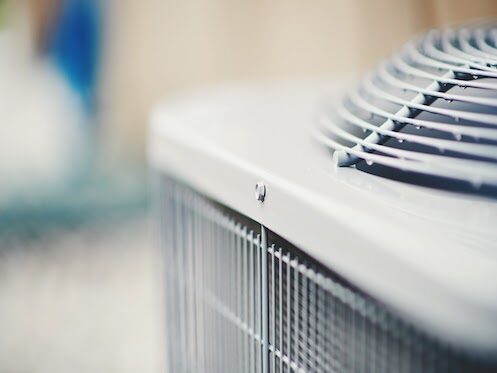Heat pumps are becoming increasingly popular as a more energy-efficient and eco-friendly way to heat and cool homes. But what exactly are they, and how do they work? In this world where climate change is a pressing issue, understanding heat pumps is crucial for anyone looking to reduce their carbon footprint and save money on their energy bills. Let’s dive into the basics of heat pumps, demystifying their operation and benefits so that you can decide whether a heat pump is right for your home.
What Exactly Are They, and How Do They Work
Heat pumps transfer thermal energy from one location to another using mechanical work rather than generating heat directly like traditional heaters. They can be used for both heating and cooling.
Heat pumps work by utilizing the fact that heat naturally flows from hotter to cooler environments. They use a refrigerant, a chemical compound with a low boiling point, that circulates through a closed loop of pipes and coils. When the refrigerant absorbs heat from its environment, it vaporizes and moves to a compressor, where it is pressurized. This compression causes the temperature of the refrigerant to rise, and the hot gas is then circulated to a heat exchanger, where it releases its heat energy to the destination location.
In cooling mode, the process is reversed, and the heat pump absorbs heat from inside the building and releases it outside. This is achieved by reversing the direction of the refrigerant flow using a reversing valve, which enables the evaporator coil to become the condenser coil and vice versa. The result is a device that can provide both heating and cooling functions with a single unit. Heat pumps can be powered by electricity or other renewable energy sources such as geothermal, solar or wind power.
Types of Heat Pumps
Heat pumps can be categorized into three primary types: ground-source heat pumps, air-source heat pumps and water-source heat pumps.
Ground source heat pumps (GSHP), which are sometimes referred to as geothermal heat pumps, use the earth’s natural heat as an energy source. They work by extracting heat from the ground through a series of pipes buried in the earth, which circulate a mixture of water and antifreeze. GSHPs are highly efficient and can provide both heating and cooling to a building. They are more expensive to install than ASHPs but have a longer lifespan.
Air source heat pumps (ASHP) work by absorbing heat from the outside air and transferring it inside the building. They are the most common type of heat pump and are relatively easy and affordable to install. ASHPs are ideal for areas with moderate climates, as they become less efficient when the outdoor temperature drops below freezing.
Water source heat pumps (WSHP) extract heat from a water source, such as a lake or river, and transfer it to the building. They are similar to GSHPs in their operation but use water as the heat source instead of the ground. WSHPs are highly efficient and can be used in both heating and cooling applications. However, they require access to a nearby water source.
Benefits of Heat Pumps
Energy Efficiency
Heat pumps are more energy efficient than traditional HVAC systems because they don’t generate heat. Instead, they transfer heat from the air or ground into your home. This means they require less energy to operate and can reduce your energy bills.
Cost Saving
Because heat pumps are more energy efficient, they can save you money on your energy bills in the long run. While the upfront cost of installing a heat pump may be higher than a traditional HVAC system, the savings on your energy bills can quickly make up for the difference.
Comfort
Heat pumps can provide more consistent heating and cooling throughout your home, eliminating hot and cold spots. They can also be used to heat your home’s water supply, providing consistently hot water for your household.
Environmentally Friendly
Heat pumps are more environmentally friendly than traditional HVAC systems because they don’t rely on fossil fuels to generate heat. This means they produce fewer greenhouse gas emissions and have a smaller carbon footprint.
Versatility
Heat pumps can be used for both heating and cooling, making them a versatile solution for year-round climate control. They can also be used in a variety of settings, including residential homes, commercial buildings and industrial applications.
Longevity
Heat pumps have fewer moving parts because they do not require a separate heating and cooling system, which means fewer mechanical parts can wear out or break down. This can result in a longer lifespan for the heat pump.
Factors to Consider When Getting a Heat Pump
Climate
The climate in your area will affect the type and size of the heat pump that is most suitable for your home. In colder climates, a larger and more powerful heat pump may be necessary to provide sufficient warmth during winter.
Size of the Home
The size of your home will also determine the size of the heat pump you need. Larger homes require larger heat pumps to provide sufficient heating and cooling.
Energy Efficiency
Heat pumps come with different energy efficiency ratings, so it’s important to consider the efficiency of the unit you’re purchasing. Look for a model that has a high SEER (Seasonal Energy Efficiency Ratio) and HSPF (Heating Seasonal Performance Factor) rating.
Installation
Proper installation is crucial to ensure that your heat pump operates efficiently and effectively. Make sure to hire a qualified and experienced HVAC technician to install your heat pump.
Cost
Heat pumps can be expensive to purchase and install, so it’s important to consider your budget and any available rebates or incentives when making your decision.
Heat Pumps Maintenance
One of the most critical steps in maintaining a heat pump is to clean or replace the air filter regularly. A dirty air filter can reduce the airflow, making the heat pump work harder to heat or cool your home, which can lead to increased energy consumption and higher utility bills.
Another essential maintenance task for heat pumps is to clean the outdoor unit. This involves removing any debris or leaves that may have accumulated on or around the unit and cleaning the coil and fan blades. This will help maintain proper airflow and ensure the unit works efficiently.
It’s also important to check the refrigerant levels in your heat pump regularly. If the refrigerant levels are low, it can cause your heat pump to work harder to maintain the desired temperature, leading to increased energy consumption and higher utility bills. In addition, low refrigerant levels can cause damage to the compressor, which can be costly to repair.
Finally, having your heat pump serviced by a professional at least once a year is a good idea. A professional can perform a more thorough inspection of your heat pump, identify any potential problems, and perform any necessary repairs or maintenance.
Call Professionals Today!
Do you need reliable cooling, heating and air quality services in Northern California? Look no further than Environmental Heating & Air Solutions! Our team of experts is dedicated to providing top-notch solutions for all your HVAC needs, including installation, maintenance and repair services. But that’s not all — we also offer plumbing services to ensure your home’s complete comfort and functionality. Call Environmental Heating & Air Solutions today and experience the difference!

